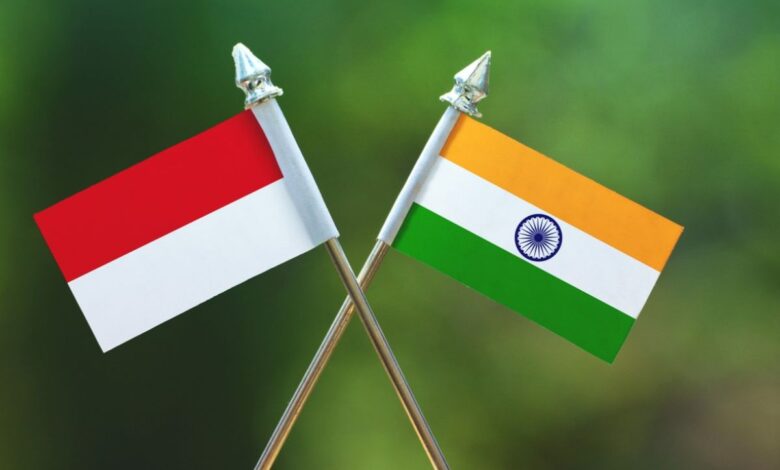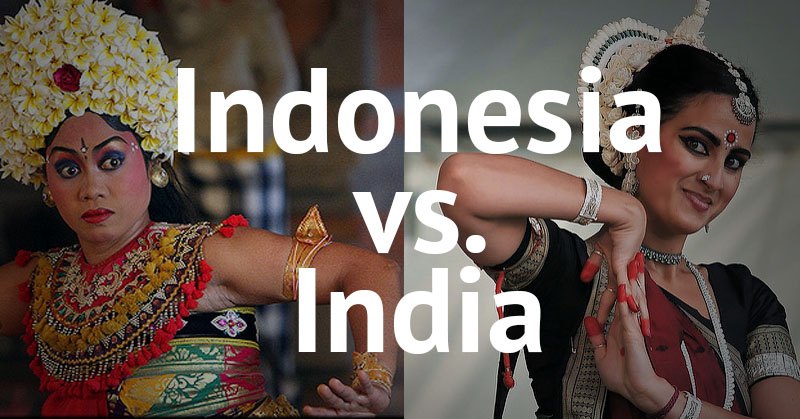India And Indonesia: A Tale Of Two Asian Giants!
In terms of economic possibilities, two of the world's 20 largest economies stand out: India and Indonesia.

Two of the world’s 20 largest economies stand out regarding growth prospects: India and Indonesia. These Asian giants, with a combined population of 1.7 billion, are expected to be the two fastest-growing top-20 economies in 2023 and for the next five years, according to the IMF. Both are pioneering techniques for increasing wealth in a period of de-globalisation, volatile geopolitics, automation, and energy transitions, while also seeking a political formula that wins elections and avoids social upheaval.
It is essential not only for their people and the investors who have staked billions of dollars in their success. It will also act as a prototype for several other countries looking for new sustainable development methods in the 2020s and beyond.

For decades, emerging countries have followed a tried-and-true formula for increasing their wealth. Move labourers from the farms to more productive industrial occupations in cities, have them produce things for export, and watch the economy rapidly formalise. It was successful in South Korea and Taiwan. It helped 800 million people in China overcome poverty. However, this strategy is no longer effective. Many nations are raucous democracies rather than authoritarian governments (as South Korea and Taiwan were before industrialisation). Protectionism jeopardises export-led growth. More robots are used in factories.
The face value of India and Indonesia.
At first appearance, India and Indonesia appear to have a lot in common. Both are governed by charismatic leaders initially elected in 2014, and both will have elections the following year. India’s PM Narendra Modi and Indonesia’s President Joko Widodo (also known as Jokowi) both began their careers in local politics and have a reputation for getting things done. They govern enormous (1.4 billion people in India and 280 million in Indonesia) and youthful nations with diverse races and languages.

Both countries, India and Indonesia, have had rapid growth.
India’s GDP has increased by 71% over the last decade, while Indonesia’s has risen by 52%. Output is dominated by services rather than manufacturing. Both are pretty open, with trade accounting for roughly 40% of GDP and yearly inflows of foreign direct investment accounting for about 1.5% of GDP.
Employment scenario of India and Indonesia.
Both economies, i.e. India and Indonesia, are predominantly informal: 90% of Indian employees and 60% of Indonesian workers operate in the grey sector. By rich-world standards, the state is small: public spending in India is only 30% of GDP, whereas, in Indonesia, it is 18%.
Infrastructure opportunities of India and Indonesia.
Both India and Indonesia are undertaking large-scale infrastructural projects. Since Jokowi gained power, Indonesia has developed 18 ports, 21 airports, and 1,700 km of toll highways. Every year, India adds 10,000 km of roadway. However, there exists a significant amount of economic catch-up to be exploited. Indonesia’s GDP per person is $4,180, whereas India’s is almost half that: both are “lower-middle-income” nations.

That’s where the parallels end for India and Indonesia. To shed light on this, we looked at four areas in each country: the top export industry, industrial policy, geopolitical position, and voter-pleasing approach. Begin with export achievements that demonstrate comparative advantage. The top export industry in India is technological services. Because of its potential to produce half a million new engineers every year, India will contribute 15% of global IT services consumption by 2021. The advantage of Indonesia is in commodities, some of which, such as nickel, are in high demand globally due to the energy shift.
Indonesia will be the world’s fourth-largest supplier of “green commodities” used in batteries and power networks by 2030.
These sectors provide a substantial amount of foreign earnings. In 2021, tech services accounted for around 17% of India’s total export value, while commodities (excluding fuel) contributed 22% of Indonesia’s total export value. However, these industries produce minimal jobs: India’s IT industry employs just 5 million people.
Through industrial strategy, both governments, i.e. of India and Indonesia, strive to boost the private sector. India has a better starting place. The MSCI India index, which includes around 85% of the market, is valued at approximately $830 billion, or nearly 24% of GDP. The Indonesia Index is only worth $123 billion, or 10% of GDP. Except for the United States and China, India has 108 “unicorn” firms (those worth more than $1 billion).

Only a few dozen have been made in Indonesia. Mr Modi expects $30 billion in “production-linked incentives” to spur investment in 14 key industries, including semiconductors. His aim to reach “net-zero” greenhouse gas emissions by 2070 entails creating solar farms, manufacturing batteries, and much more. Aside from greenery, the goal is to create jobs and reduce energy costs. The energy import bill in India is predicted to fall from 4% of GDP in 2021 to 2.5% in 2032.
The “downstream” industrial policy of the Indonesian government is centred on natural resources. It makes more use of sticks than carrots. It expects that by prohibiting the export of certain raw materials, global corporations would be compelled to establish refineries in the country. In 2014, for example, raw nickel exports were forbidden. The number of nickel smelters has increased from two before the prohibition to 13 by 2020 and up to 30 by the end of this year. A prohibition on bauxite exports will go into place soon.
There are plans to go up the value chain. Indonesia expects to produce 140GWh of electric-car batteries by 2030, nearly as much as world output in 2020. Hyundai, a car manufacturer, began producing electric vehicles in Indonesia last year.
This is a horrible, cruel world.
As Sino-American tensions rise, both India and Indonesia retain opposing geopolitical positions. These will have a long-term impact on foreign investment and commerce. Indonesia seeks to balance China and the West in accordance with its long-held policy of non-alignment. Its sovereign-wealth fund, set to start in 2021, is projected to attract up to $3 billion in investment from China, the country’s primary source of foreign direct investment. The administration does not regard this as pitting countries against one another. According to Minister Nadiem Makarim, Indonesia puts Indonesia first.
India, under Mr Modi, is significantly more cautious of China. In the midst of violent border battles with its neighbour, it has joined the Quad, a strategic alliance comprised of America, Australia, and Japan. This has economic ramifications. TikTok and hundreds of other Chinese applications were banned in India in 2020. Since then, Chinese tech businesses like Vivo and Xiaomi have faced searches and probes. Mr Modi’s economic policy includes luring Western corporations that are diversifying away from China. Foxconn, a Taiwanese iPhone manufacturer, recently gained a licence to establish a $1 billion plant in the Indian state of Karnataka.
The last category for India and Indonesia concerns how the two regimes satisfy voters. Both are producing reasonable growth, but far too few formal jobs have been created by China and the East Asian tigers. There is a lot of unemployed youth, which is a waste of India’s demographic dividend,” argues Raghuram Rajan, the former governor of the Indian central bank.
Better redistribution, frequently through new, technologically enabled welfare states, is part of the solution. Indonesia has a massive money-transfer mechanism. Mr Modi’s “India stack,” a government-sponsored suite of digital platforms, connects residents with an electronic identity to payment and tax systems, as well as bank accounts. Through these so-called direct-benefit transfers, the state gave over $76.5 billion, or more than 2% of GDP, in the fiscal year 2022, reaching over 900 million recipients.

Nonetheless, the political divisions are apparent in both India and Indonesia.
Jokowi leads a broad alliance that includes erstwhile opponents and eight of parliament’s 10 parties. According to Kishore Mahbubani, a Singaporean former diplomat, part of Jokowi’s “genius” has been to stem Islamist groups via inclusivity. Jokowi will not be able to rule again in next year’s election, but his pluralist approach is likely to persist.
Mr Modi has taken the opposite approach, exploiting anti-Muslim bigotry to galvanise India. According to Pew Research, two-thirds of Indian Hindus today consider themselves “truly Indian” because they are Hindu. Rising religious tensions and more erosion of liberal standards are anticipated in next year’s elections. Rahul Gandhi, the head of the largest opposition party, was banned from parliament recently after losing a court challenge.
Quickly becoming wealthy routes for India and Indonesia.
Which model will produce the most rapid growth? Both India and Indonesia share several issues, such as cronyism. Well-connected tycoons surround Jokowi; the problems of the Adani Group, a prominent conglomerate, have made national headlines in India. Former Indian government economic advisor Arvind Subramanian reminds out that zaibatsu conglomerates in Japan and chaebol in South Korea operated in tradable areas, pushing them to compete with foreign competition. However, Adani and other likes mainly serve the home market, keeping them safe. This fee may also apply to Indonesian businesses.

Finally, with a more robust private sector and capital markets, India is expected to expand quicker. The danger is in its politics. Both nations’, India and Indonesia, have development patterns that rely on a small segment of the economy accelerating, money trickling down through the informal economy or welfare programmes, and the government system’s ability to control the accompanying social tensions. In Indonesia, the government shapes and appeases popular opinion; in India, the government sometimes incites and directs public rage. That may not be significant in the short run. In the long run, that might be a major issue.
Proofread & Published By Naveenika Chauhan




